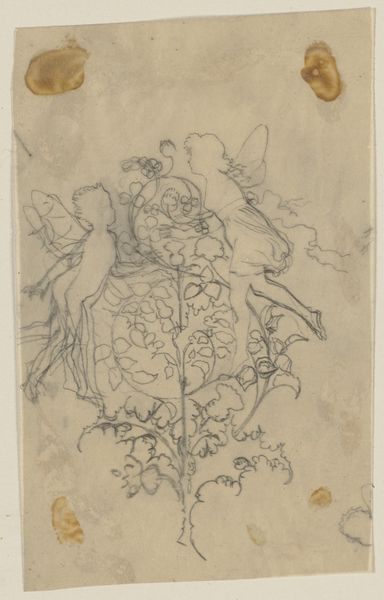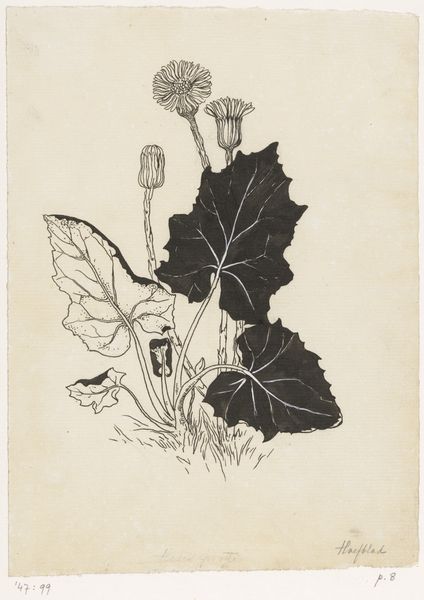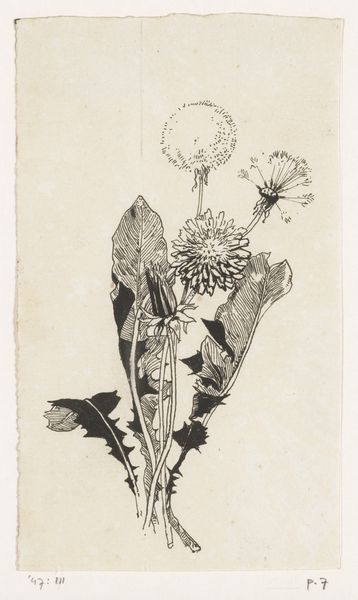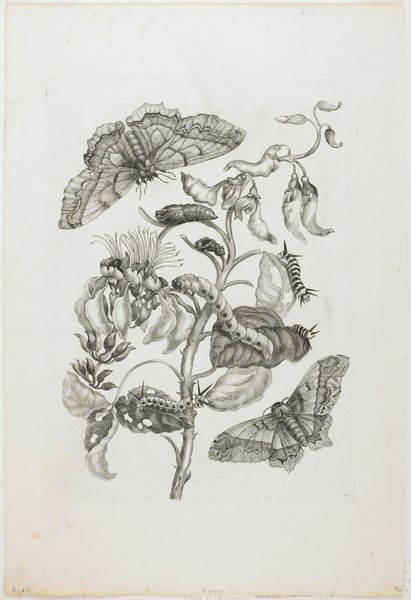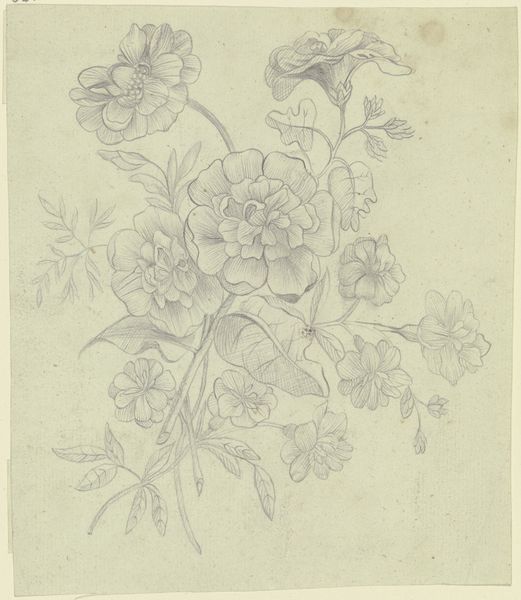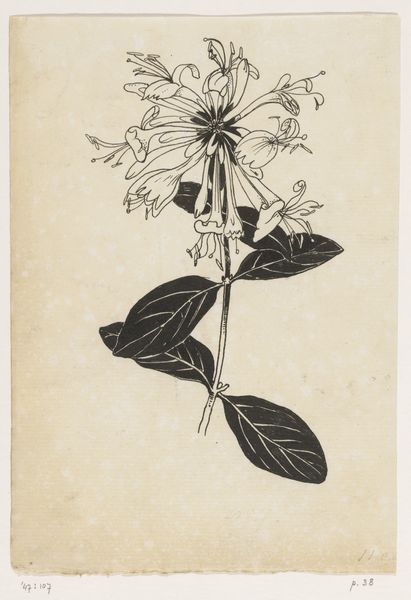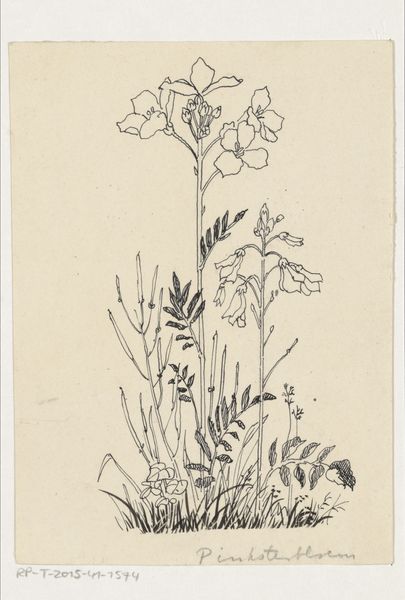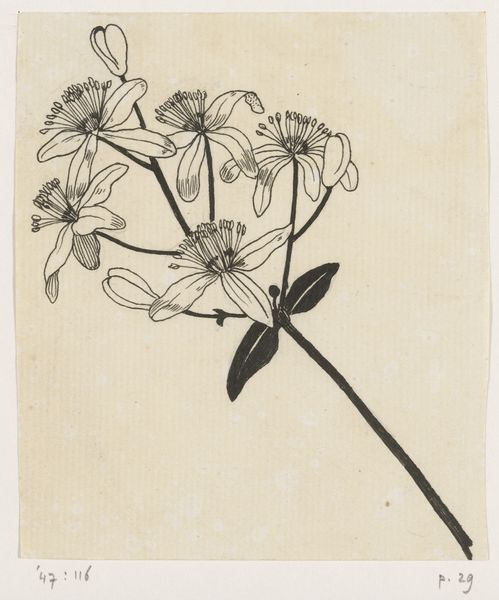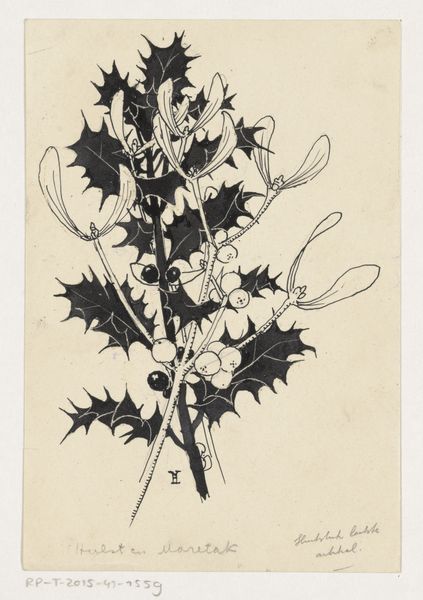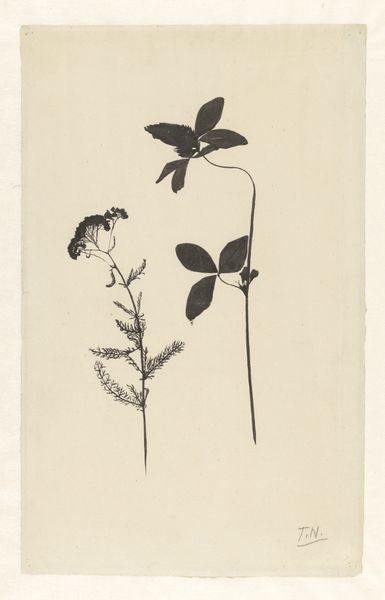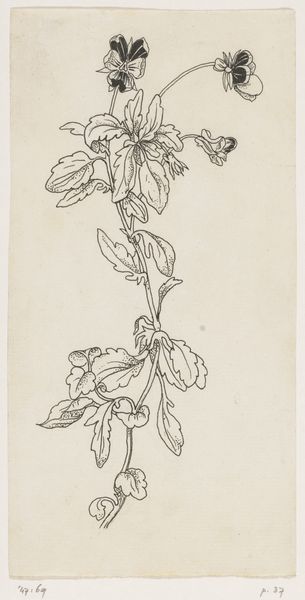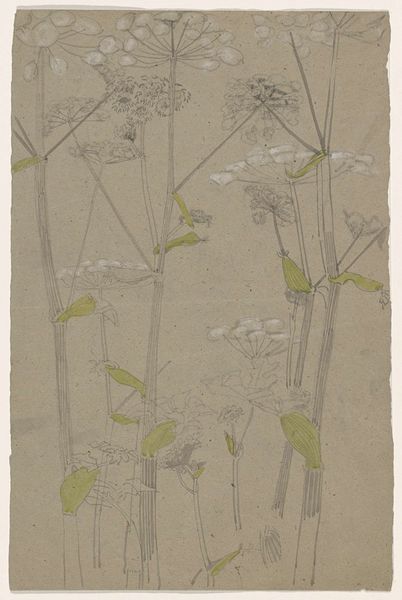
Ornament von Puck und der Elfe, links Puck mit Flügeln und Kleidung von vorn c. 1867 - 1868
0:00
0:00
drawing, ornament, ink
#
drawing
#
ornament
#
16_19th-century
#
figuration
#
ink
#
line
Copyright: Public Domain
Editor: This drawing from around 1867-68, called "Ornament von Puck und der Elfe" by Paul Konewka, features Puck, a mischievous spirit, rendered in ink. The botanical elements create a delicate, yet slightly thorny aesthetic. What's striking to me is the juxtaposition of this potentially malevolent figure with these very organic shapes, seemingly inviting or enveloping Puck, what do you see? Curator: I see Konewka tapping into a deep well of societal anxieties masked by Victorian-era whimsy. Let's consider Puck, right. This figure isn't just mischievous; it embodies a kind of unruly, anti-establishment energy. The strategic positioning of the elfen figure, faintly sketched on the left, suggests a subtle power dynamic— a kind of watchful presence, maybe representative of a marginalized, perhaps suppressed identity within a patriarchal society. How do the plants themselves, the intertwining vines and thorns, speak to you in relation to this idea? Editor: That makes sense, given the history! Well, the thorny branches and circular formation suggest constraint. Is the elfen figure somehow trapped in oppressive standards? Curator: Precisely. The ornament itself, designed to adorn, can become a symbol of restriction. Think about the Victorian obsession with domesticity and the "angel in the house" ideal. The woman is both pedestalized and imprisoned by such concepts. This is enhanced when we see line-making with sharp attention to detail which confines Puck within the illustration. In this piece, the natural world and supernatural intersect and interrogate social boundaries that bind both. What are your thoughts now? Editor: It completely changes my interpretation! I initially focused on the surface aesthetic, but now I see how Konewka is using seemingly innocent imagery to critique Victorian societal expectations. It also prompts reflections on the elfen form within gender and social hierarchies of the time. Curator: Indeed. By understanding the socio-historical context, the artwork ceases to be a simple illustration and turns into a potent commentary of society itself.
Comments
No comments
Be the first to comment and join the conversation on the ultimate creative platform.
